The Medicinal Herb Info site was created to help educate visitors about the often forgotten wisdom of the old ways of treating illnesses. Many of today's drugs and medicines were originally derived from natural ingredients, combinations of plants and other items found in nature.
We are not suggesting that you ignore the help of trained medical professionals, simply that you have additional options available for treating illnesses. Often the most effective treatment involves a responsible blend of both modern and traditional treatments.
We wish you peace and health!
|
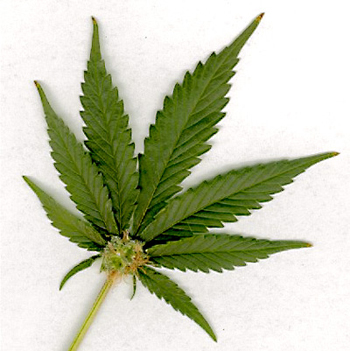 As a chronic pain sufferer myself, the recent hype about CBD as a treatment for pain, anxiety and insomnia have gotten my attention. As a chronic pain sufferer myself, the recent hype about CBD as a treatment for pain, anxiety and insomnia have gotten my attention.
CBD short for cannabidiol, is derived from cannabis or marijuana. The interesting thing about CBD is that it contains no THC (tetrahydrocannabinol), which is the component that is psychoactive. So use of CBD promises to be a valuable aid in medicinal therepaies without getting you “high”.
While investigating the effectiveness of its use for these symptoms, I came across some recommendations from the University of Michigan:
- Don’t smoke or vape. Bottom line is smoking anything harms the lungs. Vaping has been associated with a recent epidemic of lung disease, according to the Centers for Disease Control & Prevention.
- Purchase from reputable sources. Like vitamins and other supplements, CBD products aren’t regulated or FDA approved to treat disease, so buyer beware. Look for products that have been tested by an independent third party lab “so you don’t end up with a product that has THC in it or a product contaminated with heavy metals or pesticides,” says Boehnke.
- Route of administration matters. CBD is best taken in pill or capsule form for slow extended release or as an oral tincture (infused oil that contains CBD) for faster effect onset.
- Start low, go slow. Take a small amount and slowly increase your dosage until you start to get symptom relief over a matter of weeks. Track your symptoms to get a sense of whether or not CBD is a helpful part of your treatment plan.
- Check your state laws. While medical marijuana is legal in many states, it’s still illegal at the Federal level, putting CBD in a legal gray zone in many areas.

There still isn’t a lot of scientific evidence of the effectiveness of CBD, mostly because of politics. But with more and more states legalizing medicinal marijuana, it’s a sure bet that more study will be done. I will report on it here as I find it.
In the following podcast, Pharmacist Shawna Kraft discusses medical marijuana for cancer patients. She gives an understanding what it is, how to use it and how best to request it.
Be sure to check out the full description of the Cannabis plant and its medicinal uses.
Brief Commentary: Cannabinoid Dosing for Chronic Pain Management
University of Michigan: Should You Take CBD for Pain?
Podcast: Medical Marijuana for Cancer Patients
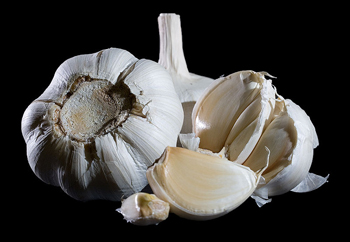 Lyme disease is in the news a lot lately. It’s a malady that causes a myriad of terrible symptoms, is carried by infected ticks and a bite can infect a person. The effects are devastating and in some cases, this condition resists standard antibiotic treatments. In these people, the pain, neurological problems and other symptoms can persist for months or even years. Lyme disease is in the news a lot lately. It’s a malady that causes a myriad of terrible symptoms, is carried by infected ticks and a bite can infect a person. The effects are devastating and in some cases, this condition resists standard antibiotic treatments. In these people, the pain, neurological problems and other symptoms can persist for months or even years.
The essential oil of a plant is the result of pressing out an oil containing the fragrance of the plant, hence the term “essential” oil. This essential oil of several medicinal plants has recently been studied by scientists for its ability to fight the Lyme disease bacterium. The herbs studied were myrhh trees, garlic cloves, cinnamon bark, amyris wood, spiked ginger lily blossoms, may chang fruit, oregano, clove buds, citronella, thyme leaves, cumin seeds and allspice berries.
According to a recent Futurity article: “We found that these essential oils were even better at killing the ‘persister’ forms of Lyme bacteria than standard Lyme antibiotics,” says Ying Zhang, professor of molecular microbiology and immunology at Johns Hopkins University’s Bloomberg School of Public Health.
The statistics are amazing. Lyme disease infects approximately 300,000 people in the US each year. It is usally treated with antibiotics and clears up as expected. However, for some unknown reason, there are an unlucky 10-20% of those cases that don’t get better with the antibiotic treatment. Those are referred to as “persistent Lyme infection” or “post-treatment Lyme disease syndrome” and can continue for months or years.
Research studies have found that the use of these herbal essential oils killed the Lyme bacteria and no new bacteria grew back in 21 days. Even the most persistent of bacteria were no match for these potent oils. These results are superior to the antibiotic treatment results.
The studies were done in lab dishes, and there needs to be more testing before the scientists are ready to say that they are to be used by doctors, but this is great news for Lyme sufferers. New treatments could be on the way for the medical community as well as for traditional healers to use with Lyme patients.
Be sure to check out the full descriptions of these plants for the complete information about their beneficial uses.
Resource Links
Futurity: Garlic OIl Beats Antibiotics at Killing Lyme Bacteria in Lab
Identification of Essential Oils with Strong Activity against Stationary Phase Borrelia burgdorferi
Johns Hopkins University: Essential Oils From Garlic and Other Herbs and Spices Kill “Persister” Lyme Disease Bacteria

In recent months I have become an avid podcast listener. One of my very favorite podcasts is Ologies by Alie Ward. She interviews, in the most entertaining way, various experts in subjects that generally have “-ology” at the end of the name.
This month, she has been covering various subjects that can relate to autumn and Halloween. In this podcast, Alie interviews pumpkin expert Anne Copeland about her study of pumpkins (Cucurbitology):
Ms. Copeland has published a book about pumpkins called Pumpkin, Pumpkin:: Folklore, History, Planting Hints and Good Eating where she tells all kinds of little-known facts about pumpkins, including recipes.
One of the fun facts she shares with us is the fact that pumpkins are not vegetabes at all. Believe it or not, pumpkins are berries and also a squash.
I recommend listening to the podcast interview with Ms. Copeland, then check out the Pumpkin page of this site to learn about the many medicinal uses for pumpkins.
According to a recent study, seven medicinal plants actually do slow or stop the growth of multiple forms of cancer, including cervical, breast, leukemia, colon, ovarian, liver, and uterine cancer. These plants have long been used by traditional healers to treat a number of ailments, but now they have been proven to have powerful effects against cancer.
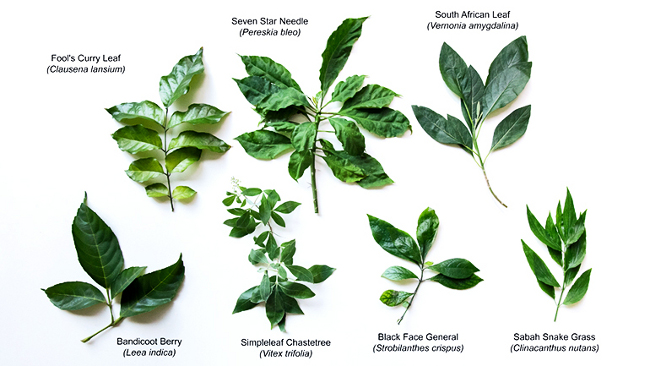
“Medicinal plants have been used for the treatment of diverse ailments since ancient times, but their anti-cancer properties have not been well studied,” says Koh Hwee Ling, associate professor from the National University of Singapore’s pharmacy department.
“Our findings provide new scientific evidence for the use of traditional herbs for cancer treatment, and pave the way for the development of new therapeutic agents.”
Several of these plants have become endangered species and this highlights the need for their protection and cultivation. They may be valuable constituents of new and more effective treatments in the future.
“Given the scarcity of land due to rapid urbanization and the dearth of records on herbal knowledge, there is a pressing need to document and investigate how indigenous medicinal plants were used before the knowledge is lost,” says Siew Yin Yin, who did the research as part of her doctoral thesis under Koh’s supervision.
It is important to note that even with the discovery of the effectiveness of these plants in fighting cancer, people should not self-medicate without consulting modern medical practitioners. Often a combined approach between modern and traditional treatments could be the best approach.
Be sure to check out the full descriptions of these seven plants for the complete information about their beneficial uses.
Resource Links
Futurity.org: These Medicinal Plants Put Brakes on Cancer Growth
Journal of Ethnopharmacology: Evaluation of anti-proliferative activity of medicinal plants used in Asian Traditional Medicine to treat cancer
National University of Singapore: Anti-cancer properties uncovered in plants
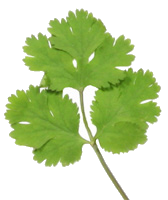
A recent research study offers potentially good news for some people that suffer from seizures.
Practitioners of traditional medicine and herbology have used cilantro for centuries as a treatment for seizures and as an anticonvulsant, but now research is finding out why it works.
It turns out that there’s a molecular action that helps cilantro delay seizures in those with epilepsy and other seizure disorders. This is because cilantro is a highly potent KCNQ channel activator. Researchers think that this discovery could lead to more effective medications for and treatments for seizure disorders.
This important research was supported by National Institute of Neurological Disorders and Stroke, National Institutes of Health and the National Institute of General Medicine Sciences.
According to the report on Futurity.com, “Researchers screened cilantro leaf metabolites, revealing that one—the long-chain fatty aldehyde (E)-2-dodecenal—activates multiple potassium channels including the predominant neuronal isoform and the predominant cardiac isoform, which are responsible for regulating electrical activity in the brain and heart. This metabolite was also found to recapitulate the anticonvulsant action of cilantro, delaying certain chemically-induced seizures. The results provide a molecular basis for the therapeutic actions of cilantro and indicate that this ubiquitous culinary herb is surprisingly influential upon clinically important potassium channels.”
The findings were published in FASEB Journal:
“We discovered that cilantro, which has been used as a traditional anticonvulsant medicine, activates a class of potassium channels in the brain to reduce seizure activity,” says Geoff Abbott, professor of physiology and biophysics at the University of California, Irvine School of Medicine and principal investigator on the study.
“Specifically, we found one component of cilantro, called dodecenal, binds to a specific part of the potassium channels to open them, reducing cellular excitability. This specific discovery is important as it may lead to more effective use of cilantro as an anticonvulsant, or to modifications of dodecenal to develop safer and more effective anticonvulsant drugs.”
Be sure to check out the full description of Cilantro (called Coriander in the UK) for the complete information about its beneficial uses.
Resource Links
Futurity: Scientist Now Know How Cilantro Works Against Seizures
FASEB Journal: Cilantro leaf harbors a potent potassium channel–activating anticonvulsant
UCI School of Medicine: New study explains the molecular mechanism for the therapeutic effects of cilantro
Recent archaeological research has found that prehistoric people living in Central Sudan may have used medicinal plants. Specifically, evidence that the Purple Nut Sedge (Cyperus rotundus) was eaten and possibly used medicinally has been found by examining the dental calculus of the skeletons found in recent digs.
The purple nut sedge is now known as a weed and can be very difficult to eradicate in agricultural settings. However, Chinese medicine and Ayurveda recognize the plant as having medicinal properties.
According to a recent Futurity article:
The research was carried out at Al Khiday, a pre-historic site on the White Nile in Central Sudan. For at least 7,000 years, beginning before the development of agriculture and continuing after agricultural plants were also available, the people of Al Khiday ate the plant purple nut sedge. The plant is a good source of carbohydrates and has many useful medicinal and aromatic qualities.
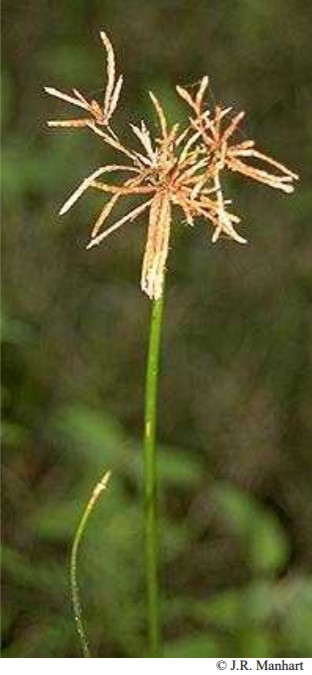 This research shows that these ancient people were well-versed in medicinal herbs and used them long before agriculture became prevalent. This research shows that these ancient people were well-versed in medicinal herbs and used them long before agriculture became prevalent.
Medicinal Uses of Purple Nut Sedge:
Purple nut sedge is known to inhibit the growth of Streptococcus mutans which contributes to tooth decay. As a result, members of the ancient population were found to have unexpectedly low incidents of dental decay.
Purple nut sedge was used by the Egyptians medicinally and as a perfume.
This plant is known in Chinese medicine as a qi-regulating herb.
Ayurveda uses this herb for fevers, dysmenorrhea and digestive disorders.
Extracts from the purple nut sedge tubers are said to act as a muscle relaxant and may reduce nausea.
Other medical uses of purple nut sedge include reduction of pain and inflammation.
Warning:
This plant is also said to be “the world’s most expensive weed” due to the difficulties in eradicating it and the costs involved for agriculture. It is not recommended as an herb to cultivate.
Sources & Additional Information:
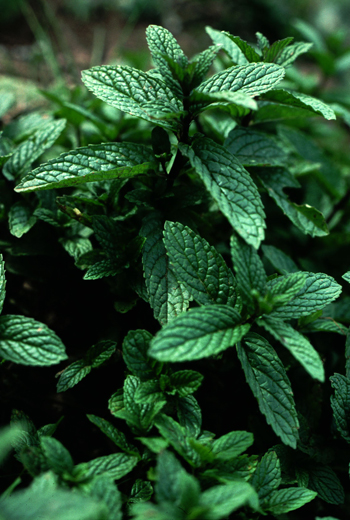
A little over a year ago, my adult son contracted MRSA (methicillin-resistant Staphylococcus aureus), one of several types of dangerous, drug-resistant bacteria. It all started as a small, harmless-looking bite of an unknown insect and ended in what could have become a nightmare. Luckily, after surgery and a multitude of intraveneous antibiotics he was finally able to be cured of the infection and is just fine today.
However, the frightening truth is that these sometimes deadly bacteria seem to be getting increasingly resistant to antibiotics all the time. One reason is the pervasive overuse of antibiotics. Also, according to the World Health Organization (WHO) “…the practice of adding antibiotics to agricultural feed promotes drug resistance. More than half of the antibiotics produced in the United States are used for agricultural purposes.”
I hate to think what eating the meat of the animals that have been served antibiotics does to those of us with severe allergies to various antibiotics. But I digress.
Because of this growing problem, scientists are now testing various medicinal plants to see which ones may be useful in fighting these microorganisms. One of the plants tested is the familiar peppermint plant (Mentha piperita). Multiple types of peppermint extracts were tested for their ability to alleviate these microorganisms:
- multidrug resistant S. pyogenes
- Enterococcus faecalis
- methicillin-resistant Staphylococcus aureus (MRSA)
- methicillin resistant Staphylococcus epidermidis (MRSE)
- penicillin-resistant Streptococcus pyogenes
- Pseudomonas aeruginosa
- Seratia marcescens
- Acinetobacter baumannii
- Stenotrophomonas maltophilia
- carbapenem-resistant E. coli
- Klebsiella pneumonia
These pathogenic culprits are to blame for infections ranging from pneumonia to serious skin infections to urinary tract infections and can be extremely difficult to treat. You can follow the link at the end of this article to read the entire scientific procedure used in the testing.
The great news is that the peppermint extracts were able to inhibit growth and showed antibacterial abilities. This is only the latest scientific study using peppermint and other plant-based extracts to fight drug-resistant bacteria and the results are extremely promising. Especially since we are hearing that things like MRSA bacteria is virtually everywhere in our environment.
In my opinion, based on this, it can’t hurt to use a common body wash like Dr. Bronner’s Peppermint Castille Soap for showering. And we should stop contributing to the drug-resistance issue by discontinuing use of antibacterial soaps and cleansers.
Source:
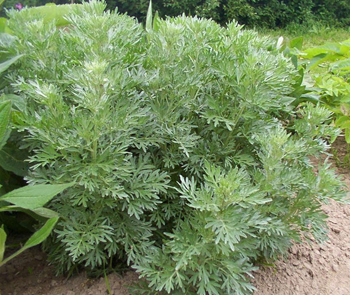 Once again, an herbal remedy that’s been used for centuries comes to the aid of researchers that are looking for a way to more effectively treat a drug-resistant disease. Tuberculosis has increasingly become resistant to treatments over the years, making it even more difficult to treat. Researchers have now found that the ancient remedy artemisinin (aka Wormwood) offers new benefits in TB treatment. Once again, an herbal remedy that’s been used for centuries comes to the aid of researchers that are looking for a way to more effectively treat a drug-resistant disease. Tuberculosis has increasingly become resistant to treatments over the years, making it even more difficult to treat. Researchers have now found that the ancient remedy artemisinin (aka Wormwood) offers new benefits in TB treatment.
“When TB bacteria are dormant, they become highly tolerant to antibiotics,” says Robert Abramovitch, a microbiologist and assistant professor in the College of Veterinary Medicine at Michigan State University. “Blocking dormancy makes the TB bacteria more sensitive to these drugs and could shorten treatment times.”
One-third of the world’s population is infected with TB and the disease killed 1.8 million people in 2015, according to the Centers for Disease Control and Prevention.
The bacteria can lie dormant in the body for many years, but once the immune system is weakened, it can spring into action again. This makes it extremely difficult to cure. Currently, treatment involves a regimen of medications given for at least six months.
By adding the wormwood remedy to the treatment, the success rate goes way up and the treatment time might be able to be reduced.
This is big news for TB sufferers and shows that medicinal herbs may just be the key to solving many of the world’s disease issues.
Sources:
Several days ago, I reported on the recent research using cinnamon. What I learned since then is very important and makes a lot of difference as to whether or not cinnamon would really be helpful in helping to burn fat, or to help in any number of other health-related ways. It seems that there are two forms of cinnamon available and only one is potent and active in this regard.
The most common form of cinnamon sold in the US is Cinnamomom cassia. It’s sometimes labeled as Chinese cinnamon or cassia cinnamon. This is the less-potent form and apparently, has the less desirable flavor in cooking as well. Who knew? I feel like a flake, having not known this before now.
The more potent and more flavorful form of cinnamon is known as Cinnamomom aromaticaum, or Ceylon cinnamon, which is native to Sri Lanka. You’ll see it also referred to as “true” cinnamon in some stores as well. It’s not as easy to find and often pricier and only found in specialty stores. Luckily, I found it and ordered it on Amazon.
Continue reading Turns Out, Not All Cinnamon is the Same
|
How You Can Help Support This Site The massive amount of content on this website is made available to readers as a gift. But websites are not free to host or maintain.
By clicking on an affiliate link and placing an order or clicking on an ad, this website receives a small commission which is used to cover hosting and maintenance expenses.
Thank you for your support.
Shop for the Cause.The purchases you make through the Arbor Day Foundation will help support important tree planting efforts around the globe.

|
 As a chronic pain sufferer myself, the recent hype about CBD as a treatment for pain, anxiety and insomnia have gotten my attention.
As a chronic pain sufferer myself, the recent hype about CBD as a treatment for pain, anxiety and insomnia have gotten my attention. 
 Unlock with Patreon
Unlock with Patreon Lyme disease is in the news a lot lately. It’s a malady that causes a myriad of terrible symptoms, is carried by infected ticks and a bite can infect a person. The effects are devastating and in some cases, this condition resists standard antibiotic treatments. In these people, the pain, neurological problems and other symptoms can persist for months or even years.
Lyme disease is in the news a lot lately. It’s a malady that causes a myriad of terrible symptoms, is carried by infected ticks and a bite can infect a person. The effects are devastating and in some cases, this condition resists standard antibiotic treatments. In these people, the pain, neurological problems and other symptoms can persist for months or even years.


 This research shows that these ancient people were well-versed in medicinal herbs and used them long before agriculture became prevalent.
This research shows that these ancient people were well-versed in medicinal herbs and used them long before agriculture became prevalent.
 Once again, an herbal remedy that’s been used for centuries comes to the aid of researchers that are looking for a way to more effectively treat a drug-resistant disease. Tuberculosis has increasingly become resistant to treatments over the years, making it even more difficult to treat. Researchers have now found that the ancient remedy artemisinin (aka
Once again, an herbal remedy that’s been used for centuries comes to the aid of researchers that are looking for a way to more effectively treat a drug-resistant disease. Tuberculosis has increasingly become resistant to treatments over the years, making it even more difficult to treat. Researchers have now found that the ancient remedy artemisinin (aka